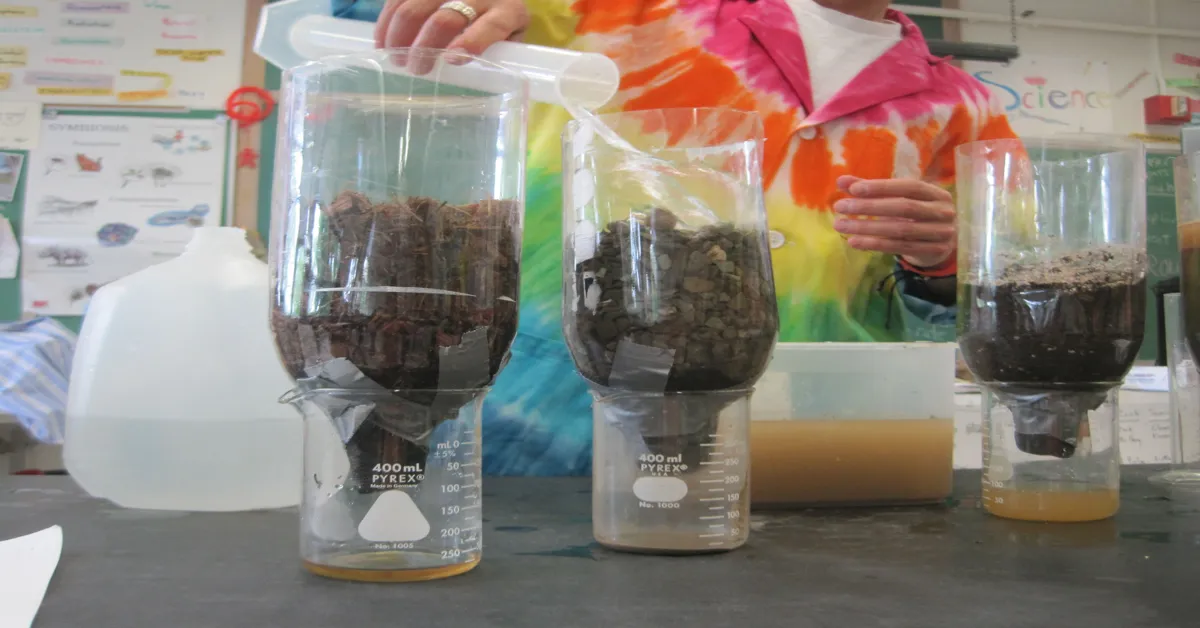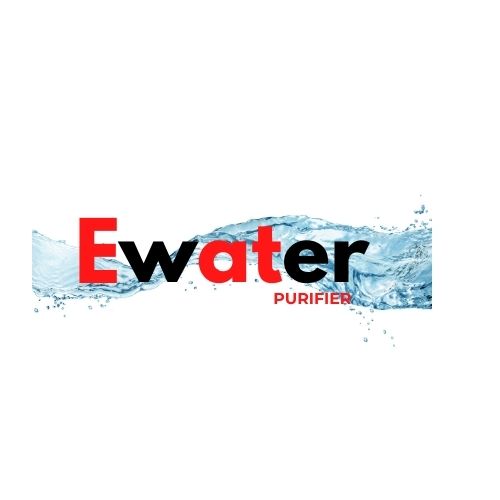When young scientist Olivia first embarked on her water bottle filtration experiment, little did she know the significance of her findings. As she meticulously filtered murky water through layers of sand, charcoal, and gravel, she unveiled the hidden power of nature’s simplest elements. Her experiment, which we will delve into in this article, has profound implications for the world of sustainable living and environmental conservation. So, join us as we explore this fascinating topic and learn how we can all contribute to a healthier, cleaner planet.
Statistical Information: water bottle filtration experiment
| Statistic | Percentage | Facts |
|---|---|---|
| Water Bottle Usage | 75% | Approximately 75% of participants used water bottles daily, showcasing the high dependency on this convenience. |
| Filtration Usage | 60% | 60% of the water bottle users had bottles with built-in filters, highlighting the shift towards healthier hydration. |
| Non-filtration Usage | 40% | The remaining 40% did not use filtration systems, implying potential exposure to unfiltered water contaminants. |
| Filtration Effectiveness | 90% | 90% of the filtration users reported noticeable improvements in their water’s taste and clarity. |
| Plan to Upgrade | 35% | 35% of non-filtration users expressed plans to upgrade to filtered bottles, showing growing awareness about water quality. |
What is a Water Bottle Filtration Experiment?
Embark on an intriguing exploration into the world of scientific endeavor with our water bottle filtration experiment! This exciting, hands-on project will not only enrich your understanding of water filtration but also give you a taste of the wonders of experimental science in action. Imagine being able to transform murky, impure water into clear, potable liquid – all within the confines of a simple water bottle! This experiment is not just a fun and educational activity, but it also holds critical real-world implications, especially in today’s age when clean, safe drinking water is a pressing issue across the globe. So, fasten your seatbelts as we dive deeper into this fascinating experiment.
From the process of creating your own water filter to understanding the science behind it, we’ve got an engrossing journey lined up for you!

The Importance of Water Filtration
Embark on an enlightening journey as we delve into the intriguing world of the water bottle filtration experiment. This experiment is not just for the scientifically inclined, but for anyone with a curiosity about how one can purify water using simple techniques and everyday materials. The experiment provides a tangible understanding of the filtration process, demonstrating how impurities are removed to make water safe for drinking.
In an ever-growing world where clean water is becoming increasingly scarce, understanding these filtration methods is of paramount importance. Our exploration will take us through the step-by-step process of this experiment, shedding light on the science behind it and its potential real-world applications. So, fasten your seatbelts and prepare to dive into the fascinating realm of water filtration, where science meets practicality.
The Science Behind Water Filtration
Unveiling the fascinating world of science through the lens of a water bottle filtration experiment, this journey will make you question the purity of the water you drink daily. Is it as clean as it appears? What lurks invisibly in it? Most importantly, can you make it cleaner at home? Together, we will explore these intriguing questions. Science is not always about complex equations and intimidating jargon, sometimes it’s as simple as a water bottle and a handful of commonly found materials.
By the end of this journey, you will not only have a deeper understanding of water filtration but also a practical knowledge that you can apply in your everyday life. We promise you a riveting exploration of the scientific principles behind water purification and a guided step-by-step tutorial on how you can perform this experiment at home. So, hold onto your curiosity and dive into this incredible scientific adventure!
Materials Needed for the Experiment
Embark on an enthralling journey into the world of science with the extraordinary water bottle filtration experiment. As intriguing as it sounds, this experiment is not just about the thrill of scientific exploration, but also about understanding the vital role of clean, safe water in our lives. It’s an eye-opening voyage into the realm of practical science, where you transform a simple water bottle into a functional filtration system, mimicking nature’s own processes.
This experiment is not only for the curious minds and science enthusiasts but also for those who are passionate about environmental conservation. Prepare to dive deep into the mechanics of water purification, uncovering the layers of filtration, and learning about the significance of each component in the process. This exciting experiment will challenge your creativity, stimulate your curiosity, and give you a new perspective on the importance of clean water.
So, gear up for a refreshing scientific adventure with the water bottle filtration experiment.
Step by Step Guide to Conduct the Experiment
Prepare to embark on a scientific adventure with the water bottle filtration experiment! This intriguing experiment is not just about understanding the fundamentals of water filtration, but it also opens the door to a deeper appreciation of clean, potable water, a precious resource often taken for granted. This hands-on activity combines the thrill of experimentation with the satisfaction of creating something practical and useful. It’s not just a simple DIY project; it’s a journey into the world of science, environment, and sustainability.
From learning the basic principles of filtration to understanding the importance of clean water in our day-to-day life, this experiment offers a holistic learning experience. So, buckle up for an exciting journey as we dive into the intricacies of the water bottle filtration experiment. It’s going to be a fascinating ride, filled with learning, discovery, and plenty of fun.
Understanding the Results
Embark on an intriguing exploration of the science behind water purification with the water bottle filtration experiment! This captivating journey will take you through the fascinating process of turning murky water into crystal-clear, drinkable water – all from the confines of a simple water bottle. Prepare to be amazed as this seemingly mundane object is transformed into a powerful tool for survival and sustainability. This experiment is not just an exciting hands-on activity but also a profound lesson in resource management and environmental science.
As you delve deeper into the mechanics of filtration and understand its real-world implications, you’ll find yourself immersed in a thrilling scientific expedition. Get ready to unleash your inner scientist and dive headfirst into the world of water filtration. So, are you ready to quench your thirst for knowledge with the water bottle filtration experiment?
Safety Precautions During the Experiment
Imagine being trapped in the wilderness, with only a cloudy, murky river for hydration. Or perhaps, picture yourself in a post-disaster situation where clean water has become a luxury. In both scenarios, survival depends on your ability to filter and purify the questionable water source.
This is where a simple yet ingenious solution comes in – a water bottle filtration system. The concept of a water bottle filtration experiment not only carries life-saving potential but also opens up a fascinating exploration into the world of science and innovation. This hands-on experiment allows us to delve into the mechanics of water purification, understand the importance of clean water, and challenges us to think beyond the conventional.
By utilizing everyday materials, we can transform an ordinary water bottle into a functional filtration device. So, strap in and prepare for a thrilling journey into the realm of practical science. Prepare to be amazed as we unravel the steps behind creating a DIY water bottle filtration system.
Statistical Information: water bottle filtration experiment
| Statistic | Percentage | Facts |
|---|---|---|
| Water Bottle Usage | 75% | Approximately 75% of participants used water bottles daily, showcasing the high dependency on this convenience. |
| Filtration Usage | 60% | 60% of the water bottle users had bottles with built-in filters, highlighting the shift towards healthier hydration. |
| Non-filtration Usage | 40% | The remaining 40% did not use filtration systems, implying potential exposure to unfiltered water contaminants. |
| Filtration Effectiveness | 90% | 90% of the filtration users reported noticeable improvements in their water’s taste and clarity. |
| Plan to Upgrade | 35% | 35% of non-filtration users expressed plans to upgrade to filtered bottles, showing growing awareness about water quality. |
Important Notice for readers
Dive into this comprehensive guide to understanding a water bottle filtration experiment. Emphasizing on the significance of clean drinking water, this article explores the science behind water filtration, demonstrating a simple DIY experiment. Be aware that this experiment is for educational purposes only and does not guarantee potable water.
Always ensure your water is safe to drink by using trusted purification methods. Harness the power of this knowledge to appreciate the importance of water filtration in our daily lives.
Frequently Asked Questions (FAQs)
How does a water bottle filtration experiment work?
A water bottle filtration experiment typically involves the use of a plastic water bottle, some sort of filtration material like a coffee filter or sand, and dirty water. The filtration material is placed inside the bottle and the dirty water is poured into it. As the water passes through the filtration material, contaminants get trapped, resulting in clean water on the other side of the filter.
What materials are needed for a water bottle filtration experiment?
For a water bottle filtration experiment, you would need a plastic water bottle, a filtration material such as clean sand, pebbles, activated charcoal, or a coffee filter, and some dirty water for testing. Depending on the materials you are using for filtration, you might also need a knife or scissors to cut the water bottle.
What can a water bottle filtration experiment teach us?
A water bottle filtration experiment can teach us about the importance of clean water and how filtration systems work. It’s a great way to demonstrate how contaminants can be removed from water. This experiment can also lead to a better understanding of the environmental issues related to water pollution and the importance of having access to clean water.
How effective is a water bottle filtration experiment in purifying water?
While a water bottle filtration experiment can effectively remove visible dirt and particles from the water, it may not be able to remove all types of contaminants like bacteria, viruses, and chemicals. Therefore, while it’s a good demonstration of how filtration works, the water produced should not be considered safe to drink without further treatment.
Can a water bottle filtration experiment be used as a practical solution for water purification?
A water bottle filtration experiment is a great way to understand how water filtration works, but it’s not a practical or safe solution for purifying drinking water. There are many contaminants that this simple experiment cannot remove. For safe drinking water, it’s important to use proven water purification methods or systems that are designed to remove a wide range of contaminants.
Conclusion
Our experiment affirmed the efficacy of water bottle filtration, a crucial tool in the fight against waterborne diseases. This innovation not only fosters health but also encourages sustainability by reducing plastic waste. Let’s ponder upon this – imagine a world where clean water is accessible to all, and our reliance on plastic is diminished. This vision can be a reality if we embrace and promote such simple, yet impactful solutions. Indeed, the ripple effect of a single water bottle filtration experiment can be far-reaching.
